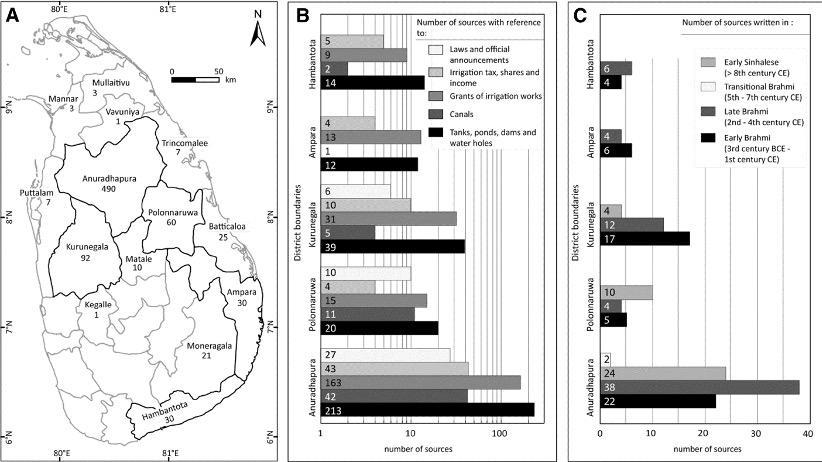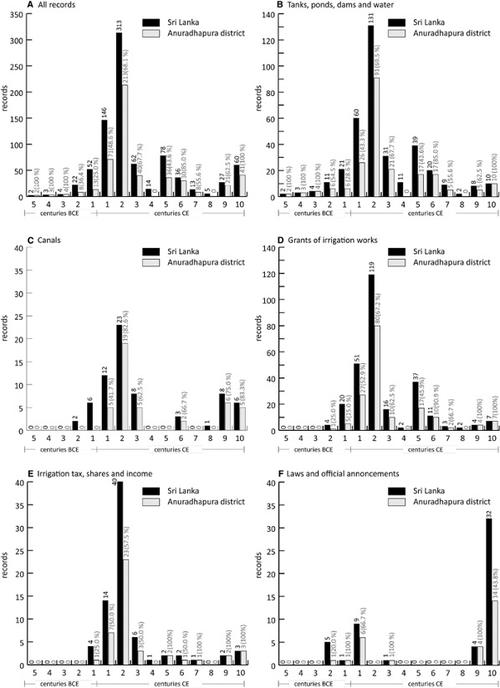Temporal and spatial distribution of records on ancient water harvesting and water management systems
The spatial and temporal distribution of the historical records on water management and governance together with their qualitative information reflect the evolution of the water management and governance systems in the Dry Zone of Sri Lanka.
Spatial distribution of records
The majority of written and epigraphic records are located in the district of Anuradhapura (North Central Province), followed by the district of Kurunagala (North Western Province). This high density of records can be explained by the general political importance of the hinterland of the ancient capital Anuradhapura and the considerable impact of major tanks in its hinterland. When discussing the spatial distribution of records the state of the research also has to be considered as a biasing factor. From the Colonial Period onwards, the ancient urban and ritual centres such as Anuradhapura, Polonnaruwa and Thissamaharama with their monumental architectural ruins and massive irrigation schemes comprised the research focus of historical and archaeological studies. In the Northern Province the civil war (1983–2009) should be regarded as another aspect influencing the spatial distribution of available records.
Temporal distribution of records
The first mention of a pond in the written sources dates back to the 5th century BCE. After the 3rd century BCE the number of records gradually increases, reaching a maximum in the 2nd century CE. This development correlates with the introduction of Buddhism (in the 3rd century BCE) followed by a series of donations to Buddhist entities often linked with lithic inscriptions. For records distributed between the 4th and 7th centuries CE there is a source problem, as a complete compilation of inscriptions from these centuries has not yet been published.
Remarkable is the high number of records in the category “Laws and official announcements” in the 10th century CE, indicating a stronger development of bureaucratic and centralized water management structures with various officials (e.g. agriculture officers) and regulations for large-scale partly interconnected tanks.

